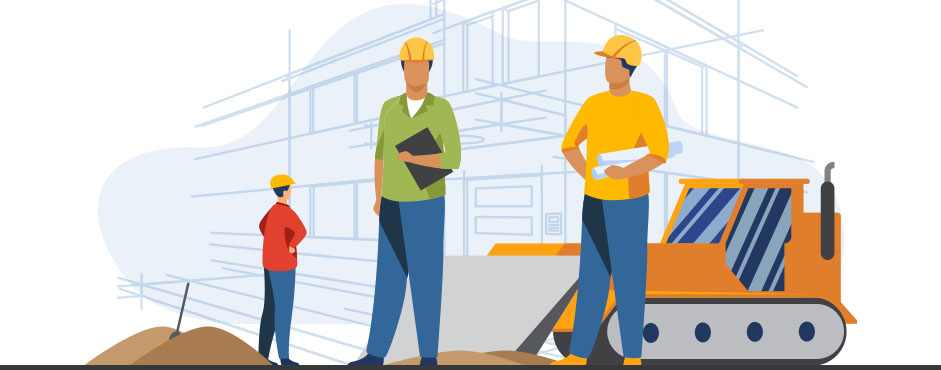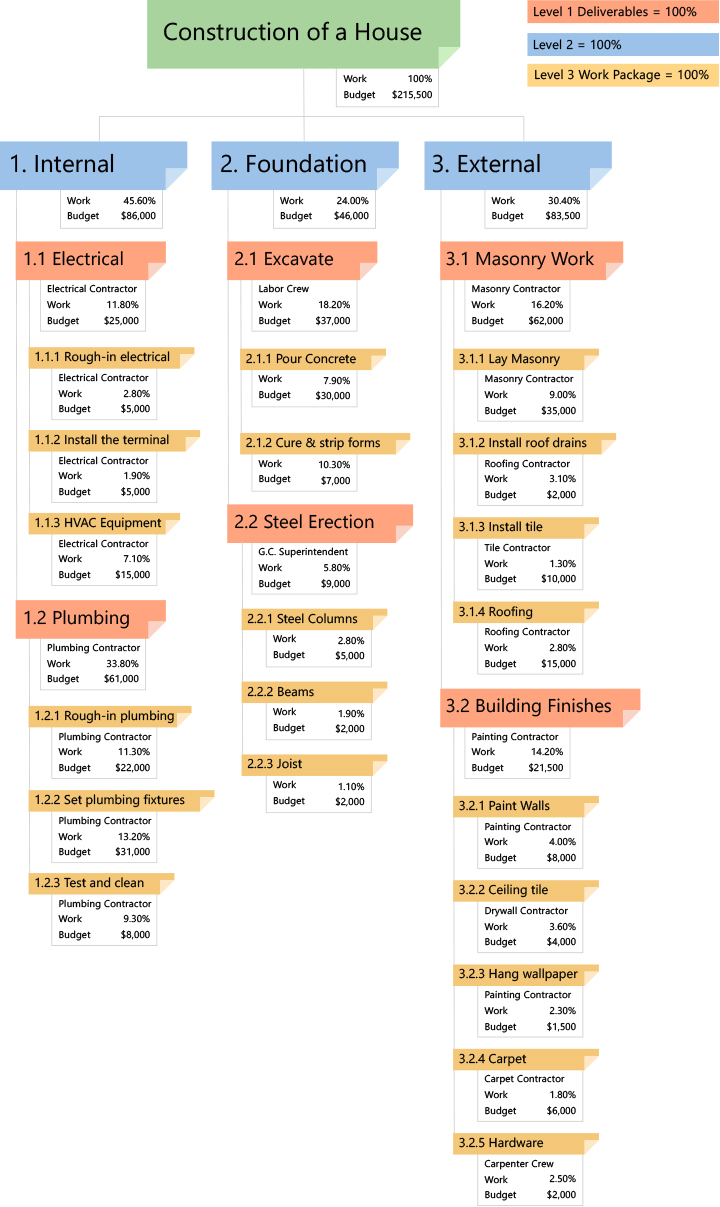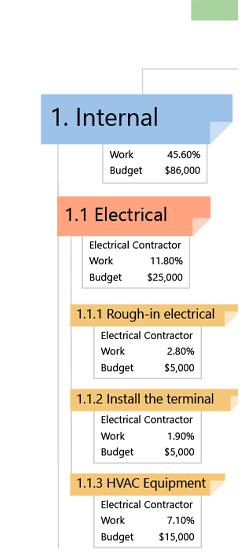This website uses cookies to improve user experience.

➔Free 30-day WBS Software Trial
The Work Breakdown Structure (WBS) is both a model and a work measurement baseline tool for project management. The 100% Rule is an essential part of work breakdown structure methodology, in that application of this rule and its related concepts is critical in assuring the usefulness and accuracy of its application.
Work breakdown structure methodology is commonly used in construction and research and development (R&D) projects for planning and executing work, but can be useful in any field. Applying the 100% Rule, the top level of a work breakdown structure is the totality of the project, and lower levels categorize greater detail in a top-down structure under the first level.
The work breakdown structure shown below describes the work involved in a house construction project.

Figure 1. Work Breakdown Structure of a House
The top level of the diagram is the complete overview of all that needs to be accomplished. The structure then "breaks down" the work into major components. Where necessary, these components are then broken down further. Using the 100% Rule, the top level contains everything; however, the 100% Rule also applies at every level below that.
As an example, work breakdown structure element 1.2 includes all the planned work and budgeted money (cost estimates) for plumbing and element 1.2.2 below it includes all the efforts and dollars planned for plumbing fixtures and trim.
Accurate definition of tasks is a key to good management of a project, and the 100% Rule is an essential part of that. When a work breakdown structure is developed for a new project, it must represent and ultimately capture all efforts devoted to that project and, just as importantly, none that are not devoted to the project.

Figure 2. Work Breakdown Structure Level 2
Applying the 100% Rule allows the manager to know that all efforts in each area are captured where they belong and also that nothing unrelated is included in an element.
The work breakdown structure contains a planning framework of planned outcomes that precedes project scheduling. Scheduling actually cannot be accomplished until a work breakdown structure is laid out. Being outcome oriented, the work breakdown structure defines everything that needs to be accomplished under the 100% Rule, regardless of work methodology and schedule changes. While methods and activity schedules might change during the project, the work breakdown structure should remain unaltered.
Application of the 100% Rule enables all outcomes to be defined before schedule planning begins. The work breakdown structure is the initiator in the planning process, as planned outcomes must be defined before methods and schedules can be considered. If outcomes are insufficiently defined, the project cannot succeed. Awareness of the 100% Rule enables and communicates full understanding of all necessary outcomes.
Once the project is underway the 100% Rule assists in assuring that project costs are properly shown in the accounting system. This is true for all projects, whether they are accomplished for another division in a company or for a regular paying customer. Application of the 100% Rule enables accurate costing, which is essential to budgeting similar efforts in the future.
The construction company building the house will record the costs actually experienced in the building project, and will use that experience in the next job to be started. The 100% Rule assures that all costs are accurately recorded. The experienced cost will be compared to what was expected, at all levels of the work breakdown structure. Planning efforts can then be improved to more accurately predict the next project's schedule and cost, even if a different size and design of house is to be built.
The 100% Rule is especially important in cases like the home building example. A project planned and accomplished for a customer or for another organization must be carefully monitored so that the customer is charged only for legitimately relevant costs, and that the customer is aware of and confident in this.
Clear thinking in planning a project, which includes application of the 100% Rule in WBS preparation, produces accurate plans and accurate recording of cost estimates.